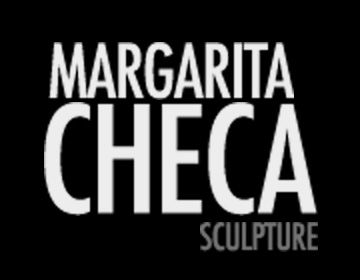Art from women’s point of view
By DANIELLA WALSH
SPECIAL TO THE REGISTER
These are post-feminist times indeed. To name an exhibition composed of sculptures by four women “A Woman’s Touch” would have, until rather recently, unleashed the furies.
After all, the term tends to imply a finicky attention to detail that men, ostensibly pre-occupied by matters of greater importance, would ignore. But, political or gender correctness aside, this small exhibition currently at the Museum of Latin American Art in Long Beach is a collection of sculptures with a merely whimsical title.
Curated by Eliud Alvarado, the show features works in glass, clay, wood and paper by Isabel de Obaldia, Susana Espinosa, Margarita Checa and Peschel (née Patricia Waisburd). While all works are powerful and engaging, Peschel’s even contain bits of humor.
A Mexican-born former dentist, Peschel works with large sheets of brown paper, the stuff grocery bags are made of. She shapes the wet paper over armatures and sets the desired forms with a substance that she describes as a sort of dental adhesive. The results are nothing short of stunning, especially since they appear to stand unsupported.
While papiermaché is a Mexican folk art staple, Peschel offers a new take on pa¬per recycling. “Kaddish” for example, shows three figures standing around a prayer book. As befits recitation of the Jewish prayer for the dead, the faceless figures are clad in gowns and prayer shawls. The absence of faces symbolizes the departure of the spirit. Another seated, faceless figure (“And the Soul Made Itself Comfortable”) and a relief sculpture apparently in flight (“Is Not a Dream”‘) support the artist’s stated preoccupation with spirituality.
On a lighter note, “French Manicure” shows a seated young woman brushing white paint over the tip of a fingernail. The figure represents a concession to female vanity and a bit of wishful thinking, since Peschel noted that artists never really grow glamorous fingernails. Peschel is the only one of the four women whose work thus gives a clue to her gender.
Panamanian resident Isabel de Obaldia started working in cast glass after taking a course at the Pilchuck Glass School in Washington. Her previous training includes cinematography and architecture and, keeping that in mind, one recognizes a modernist architectural aesthetic in her spare forms.
Headless male torsos over legs devoid of feet are primarily distinguished by the colors and structural permutations of the glass. Titles like “Blue Eyes,” “Snakes” or “Messy Eyes” suggest identifying descriptions for objects perhaps unearthed at an archaeological dig. They are superficiallyrecognizable as human forms, but their origins and deeper meaning are open to speculation.
Argentinean-born Puerto Rican resident Susana Espinosa forms androgynous-looking clay figures whose facial expressions eerily connect with viewers. Containing abstracted human and animal elements, the figures suggesttribal art from places yet to be discovered.
In her “Personala” series she layers slabs of clay to achieve a richness of texture reminiscent of American clay artist Peter Voulkos, while other, more finely delineated figures loosely recall Stephen DeStaebler and William Catling minus the inherent sense of suffering (“Figure inOcher”). Espinosa also reaches into a fantasy world rooted in the multi-faceted folk culture of Puerto Rico with mythology-inspired busts like “Tritorn” and “Blue Woman.”
Margarita Checa weighs in with “The Doors of Perception,” a spectacular woodcarving with inlaid silver and bull-horn that seems to encompass the mythology of countless ancient and presentday religions. Checa, a Peruvian-born artist, reinvents the human form as representation of the mysteries of reincarnation, transmigration of souls or perhaps the travails of modernday boat refugees.
Children and adults, distinguished by heads with curiously enlarged cranial bones, sadly expressionless faces and finely rendered limbs, travel in boats as forlorn family groups or in pairs or assume quiet meditative poses. Technically flawless, the figures lend themselves to a variety of spiritual, mythological, personal and political interpretations. Words seem insufficient to describe them – it’s best that they be seen.
What: The sculptures of Margarita Checa, Isabel de Obaldia, Susana Espinosa and Peschel. Where: The Museum of Latin American Art, 628 Alamitos Ave., Long Beach.
where: Through May 30. Museum hours: 11:30 a.m.-7 p.m. TuesdaysFridays; 11 a.m. to 7 p.m. Saturdays; 11 a.m. to 6 p.m. Sun-days
How much: General, $5, seniors and students $3 Cali: (562) 437-1689 Online: www.molaa.eosn
Back